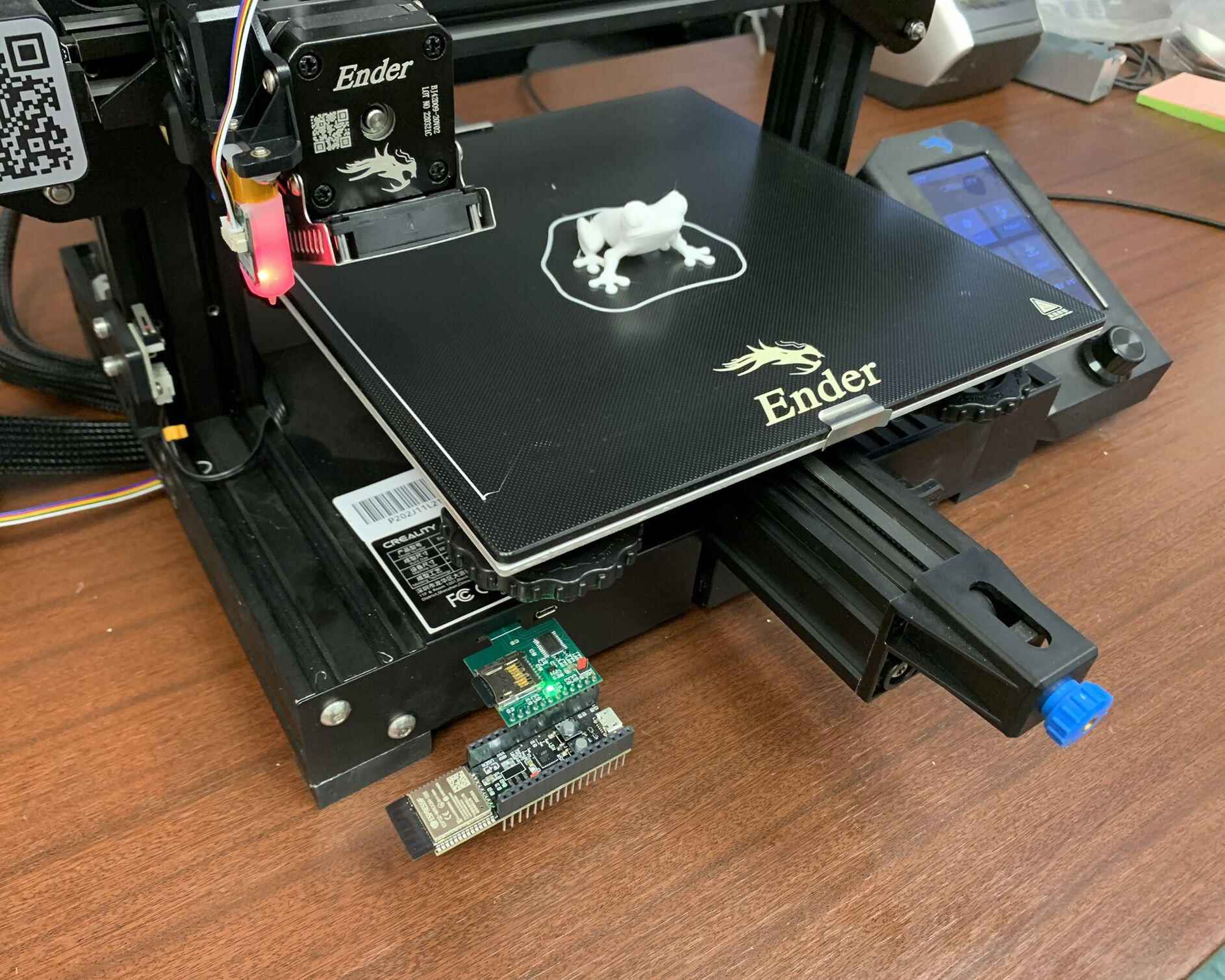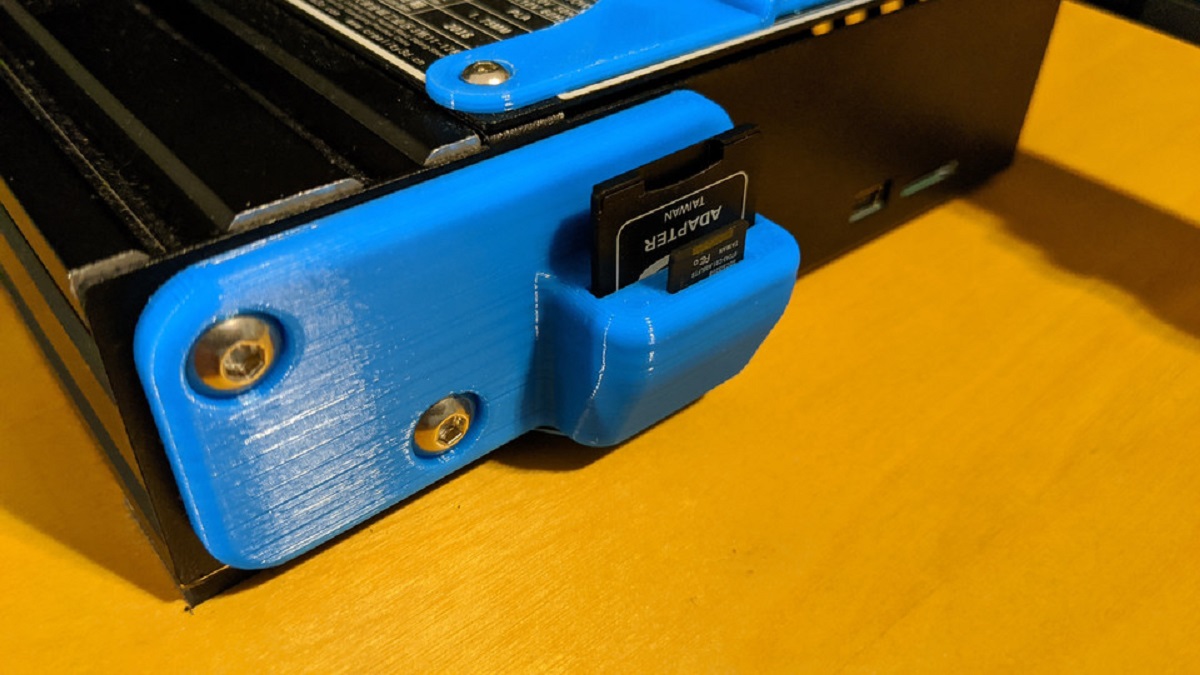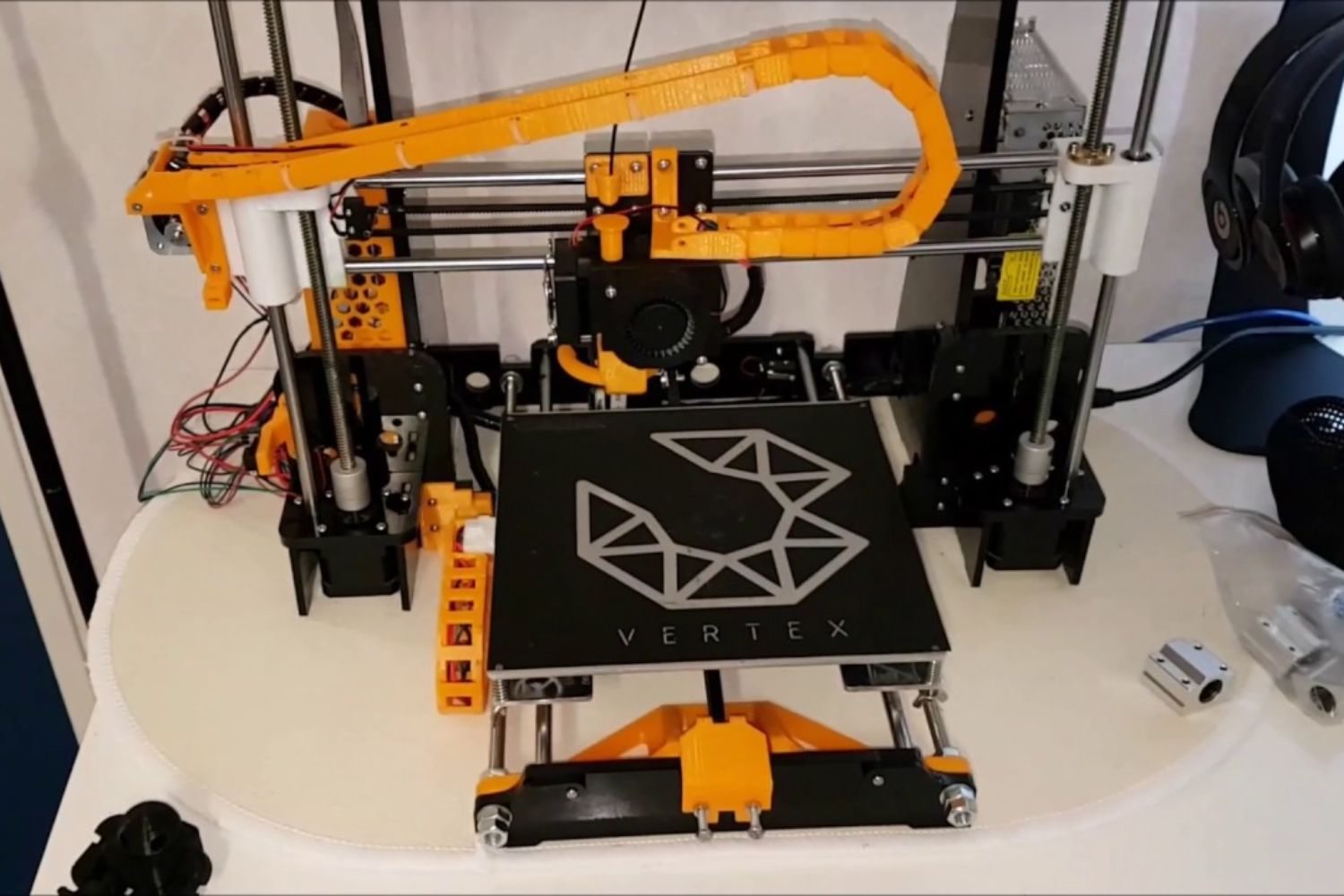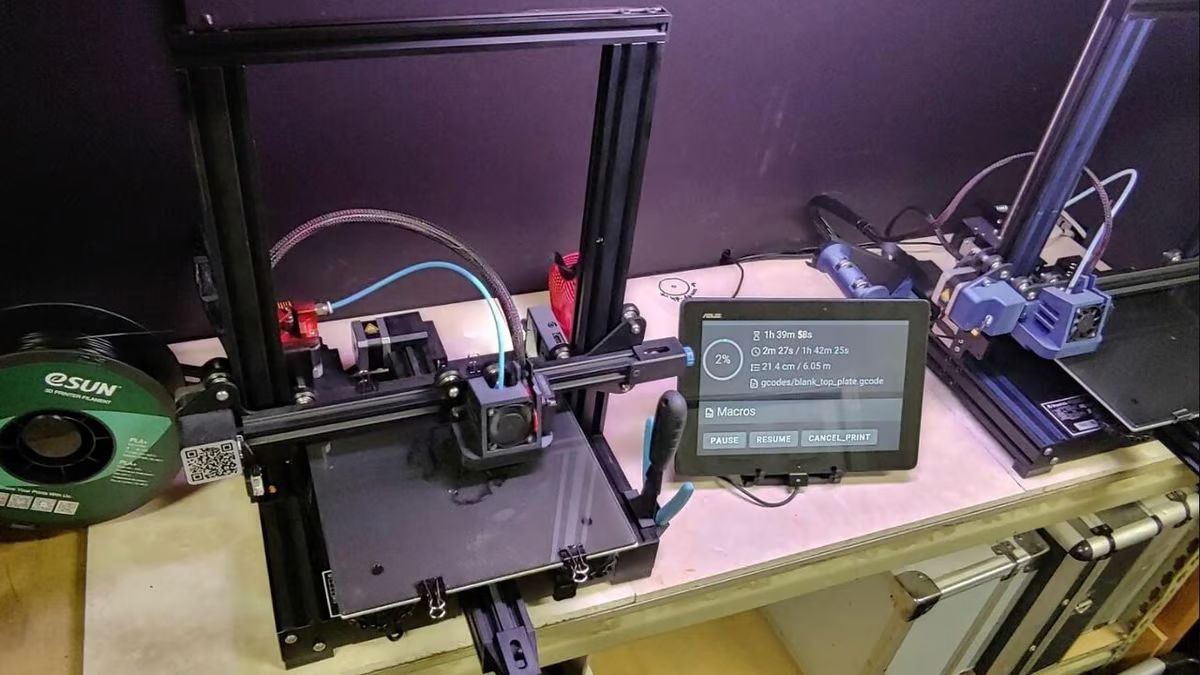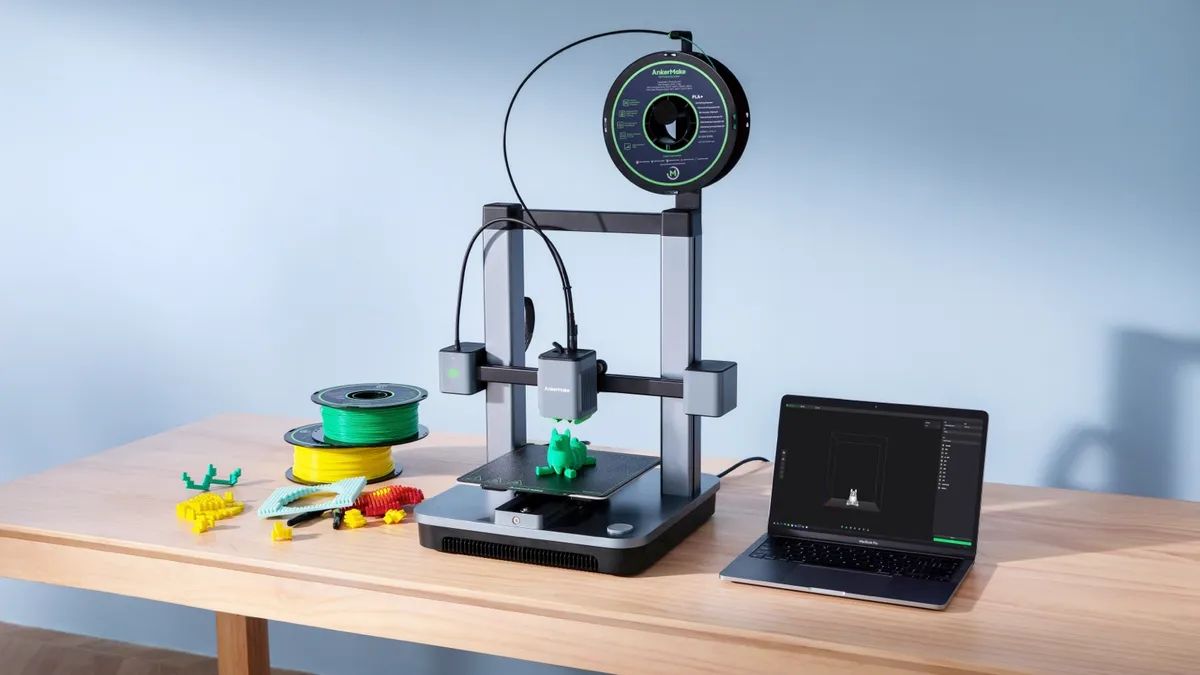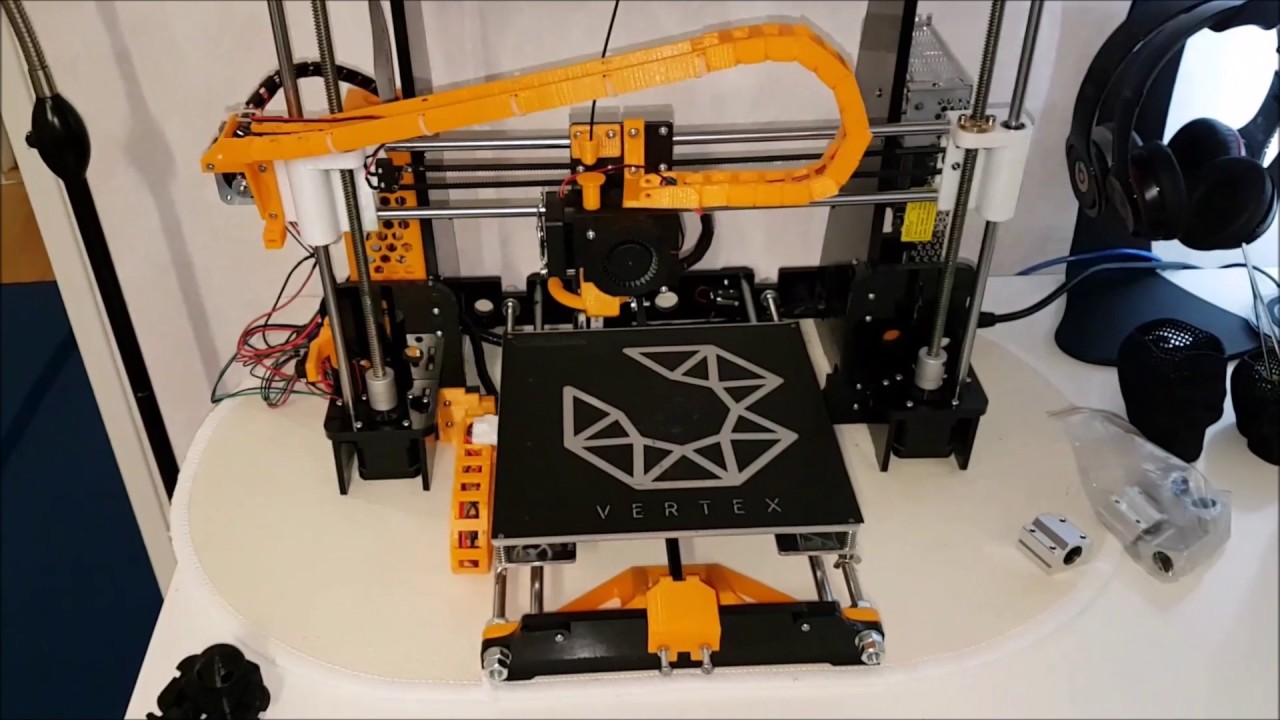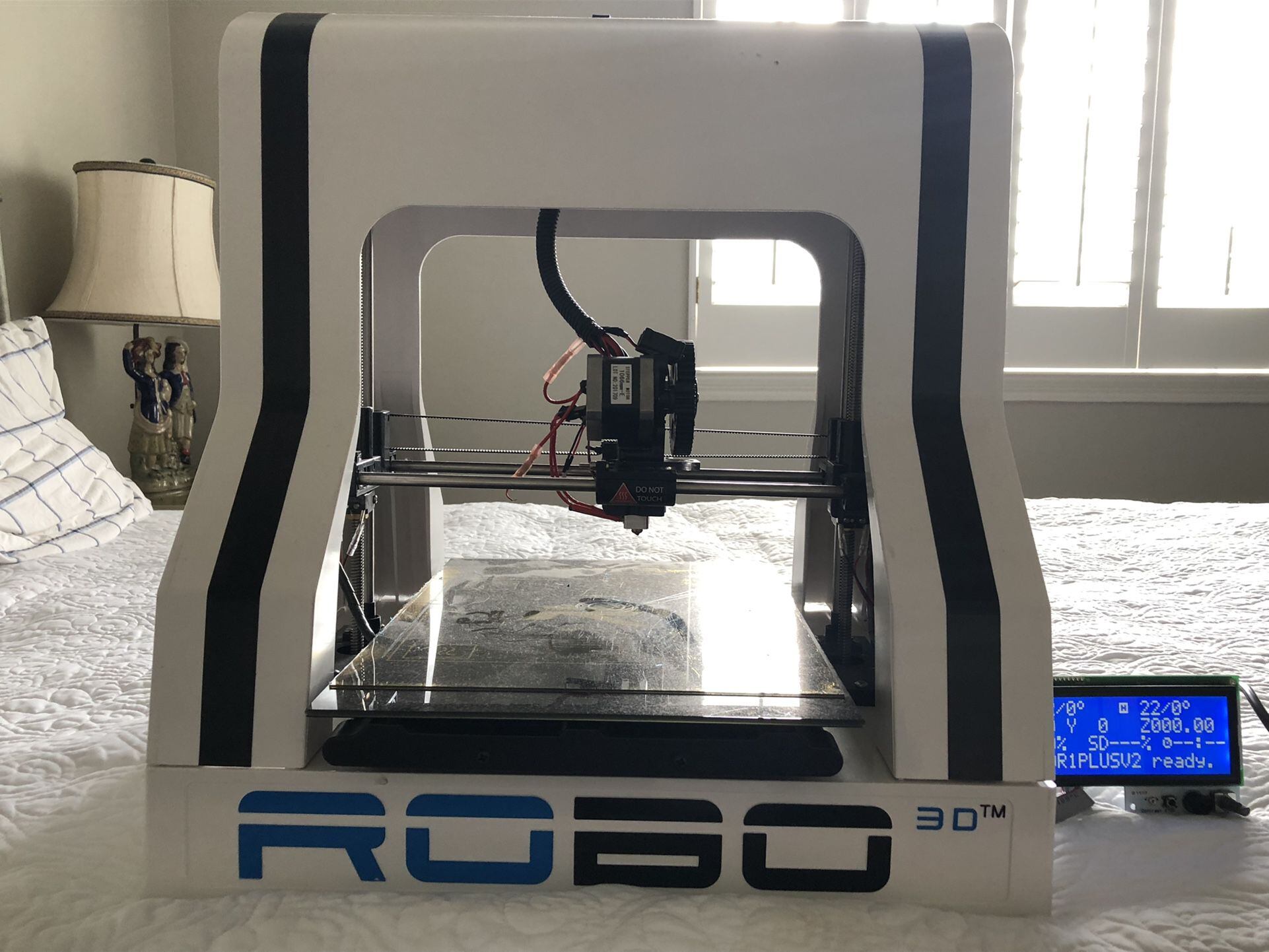Introduction
Having a 3D printer can be an exciting and rewarding experience, but it can also come with its fair share of challenges. One common issue that many 3D printer users encounter is the “SD card not reading” error. This can be extremely frustrating, especially when you’re eager to start a new print project.
The SD card is an essential component of your 3D printer, as it is where the printer retrieves the necessary instructions and files to complete a print job. When the printer is unable to read the SD card, it can interrupt your workflow and delay your printing process.
There can be several reasons why your 3D printer is not reading the SD card. It is important to have a basic understanding of these potential causes in order to troubleshoot and resolve the issue effectively.
In this article, we will explore some of the common reasons why your 3D printer might not be reading the SD card and provide you with potential solutions to get your printer back up and running.
Firmware Issue
One possible reason why your 3D printer is not reading the SD card is a firmware issue. The firmware is the software that runs on the printer’s control board, and it plays a crucial role in managing the printer’s functions.
If your printer’s firmware is outdated or corrupted, it can lead to compatibility issues with the SD card. In some cases, the firmware may not have the necessary drivers or protocols to communicate effectively with the SD card. This can result in the printer being unable to read the files stored on the card.
To resolve this issue, you can try updating the firmware of your 3D printer. Check the manufacturer’s website or the printer’s documentation for instructions on how to update the firmware. Make sure to follow the steps carefully and ensure that you have a stable power source during the update process to prevent any disruptions.
If updating the firmware does not resolve the problem, you may need to perform a factory reset on your printer. This will revert the printer’s settings back to their original defaults, which can help resolve any conflicts or compatibility issues.
It’s worth mentioning that modifying or updating the firmware carries some risks, so it’s essential to proceed with caution and follow the manufacturer’s guidelines to avoid causing further damage to your printer.
If the firmware update or factory reset does not fix the SD card reading issue, it’s recommended to contact the printer manufacturer’s technical support for further assistance. They may be able to provide you with specific troubleshooting steps or suggest other solutions to address the problem.
Corrupted SD Card
Anothor common reason why your 3D printer might not be reading the SD card is a corruption within the card itself. SD cards can become corrupted due to various factors, such as improper ejection from the printer or computer, power outages during file transfer, or even general wear and tear over time.
When an SD card becomes corrupted, the data stored on it may become unreadable or inaccessible. This can prevent your 3D printer from recognizing the card and reading the files necessary for printing.
To troubleshoot a corrupted SD card, the first step is to try inserting the card into a different device, such as a computer or a different 3D printer. If the card is still unreadable in other devices, it likely means that the card itself is the issue.
You can try using data recovery software to retrieve any important files from the corrupted SD card. This software can often repair minor corruptions and allow you to salvage your files. However, keep in mind that it may not always be successful, depending on the extent of the corruption.
If data recovery does not work, you may need to format the SD card. Formatting will erase all data from the card, so it is important to confirm that you have backed up any necessary files before proceeding. Formatting can often fix minor corruptions and make the card readable again.
If formatting does not resolve the issue, it is recommended to replace the SD card with a new one. SD cards are relatively inexpensive and widely available, so obtaining a new card should be a relatively straightforward solution.
Additionally, it is worth checking if your 3D printer supports a specific type or brand of SD card. Some printers may have compatibility issues with certain cards, so using a different brand or type of card may help resolve the problem.
Overall, a corrupted SD card can be a common cause of the “SD card not reading” error. By troubleshooting the card and potentially replacing it, you can get your 3D printer back on track and resume your printing projects in no time.
Improperly Formatted SD Card
An improperly formatted SD card can also be a reason why your 3D printer is not able to read it. When an SD card is not formatted correctly, it may not be compatible with the file system used by the printer or may not have the proper directory structure for storing the print files.
To resolve this issue, you can try formatting the SD card using the correct file system and directory structure. Most 3D printers require FAT32 formatting for SD cards, but it’s always a good idea to refer to your printer’s documentation to ensure you are using the correct formatting specifications.
You can format the SD card using your computer’s operating system. Connect the SD card to the computer using an SD card reader or adapter, then navigate to the disk management utility. From there, you can select the SD card and choose the option to format it. Make sure to select the FAT32 file system and leave the allocation unit size as default.
It is important to note that formatting the SD card will erase all the data on it, so ensure that you have backed up any necessary files before proceeding.
After formatting the SD card, reinsert it into your 3D printer and check if it can now read the files properly. In some cases, this simple step can resolve the problem and restore the functionality of your SD card.
If formatting the SD card does not resolve the issue, it is possible that the card itself may be faulty or damaged. In such cases, it is recommended to try using a different SD card and see if the problem persists. If the new card is read successfully, it indicates that the original SD card was indeed the source of the problem.
Properly formatting the SD card is a crucial step to ensure its compatibility with your 3D printer. Taking the time to correctly format the card can save you valuable time and frustration in the long run, allowing you to focus on your 3D printing projects without any interruptions.
Incompatible File Format
If your 3D printer is not reading the SD card, it could mean that the file format of the 3D model you are trying to print is incompatible with the printer’s software. Different printers have different file format requirements, so it is essential to ensure that the 3D model files are in a format that your printer supports.
The most commonly used file format for 3D printing is STL (Standard Tessellation Language). STL files contain a three-dimensional representation of the object to be printed, consisting of a mesh of triangles that define the surface of the model. Most 3D printer software and firmware are compatible with this file format.
If the 3D model file you are trying to print is not in the compatible format, you will need to convert it to the appropriate format before your printer can read it. There are various software tools available, both free and paid, that can help you convert the file to the required format.
Additionally, it is important to ensure that the 3D model file is not corrupted. A corrupted or incomplete file can also cause compatibility issues with your 3D printer. To check for file integrity, you can try opening the file in a 3D modeling software or using a file repair tool specifically designed for 3D models.
If you are unsure about the compatibility of the file format or suspect that the file may be corrupted, you may consider obtaining the 3D model from a reliable source or contacting the designer for assistance. They may be able to provide you with a compatible file or troubleshoot any issues you are facing.
It is also worth noting that some 3D printers have proprietary software or file formats. In such cases, you may be required to use the manufacturer’s dedicated software to slice and prepare the 3D model for printing. Make sure to consult the printer’s documentation or support resources to understand the specific file format requirements and software recommendations.
By ensuring that your 3D model files are in the appropriate and compatible format, you can eliminate potential compatibility issues and successfully print your desired objects using the SD card and your 3D printer.
Faulty SD Card Slot
If your 3D printer is not reading the SD card, one possible reason could be a faulty or damaged SD card slot. Over time, the SD card slot can become loose or develop connection issues, preventing proper communication between the printer and the card.
To determine whether the SD card slot is the culprit, you can try inserting a different SD card into the slot and see if it is detected by the printer. If the new card is recognized and readable, it indicates that the issue lies with the original SD card slot.
If you suspect a loose connection, you can try firmly inserting the SD card into the slot and ensure it is properly seated. In some cases, a loose connection can be resolved by securing the SD card in place. However, if the slot remains unresponsive, it may require more extensive repair or replacement.
If your 3D printer is under warranty, it is advisable to contact the manufacturer’s technical support and request assistance. They may provide guidance on how to fix the issue or offer to repair or replace the faulty SD card slot.
On the other hand, if your printer is not under warranty or you prefer a DIY approach, you can attempt to fix the SD card slot yourself. First, make sure you have the necessary tools and resources to disassemble your printer safely. Then, carefully inspect the SD card slot for any visible damage or debris that may be obstructing the connection.
If you notice any debris, gently clean the slot using compressed air or a soft brush to remove it. Be cautious not to apply too much force or damage the delicate components of the slot. If the slot appears damaged or beyond repair, you may need to consider replacing it with a compatible replacement part.
Remember, if you are uncomfortable or uncertain about conducting the repairs yourself, it is best to seek professional help to avoid causing further damage to your 3D printer.
A faulty or damaged SD card slot can be a frustrating issue, but with proper troubleshooting and possible repairs or replacement, you can ensure that your 3D printer is able to read the SD card smoothly and continue producing high-quality prints.
Loose or Damaged Wiring
If your 3D printer is not reading the SD card, another possible culprit could be loose or damaged wiring. The wiring responsible for connecting the SD card slot to the printer’s control board plays a crucial role in facilitating communication between the two components.
Over time, wires can become loose due to vibrations or accidental tugs, which can result in a weak connection or disrupted signal transfer. In some cases, the wires may become damaged or frayed, further complicating the issue.
To address this potential problem, you can start by visually inspecting the wiring that connects the SD card slot to the control board. Look for any loose connections, disconnected wires, or visible signs of damage. If you notice any issues, carefully reattach or secure the wires and ensure they are tightly connected.
If the wiring appears damaged, it may need to be replaced. Depending on the extent of the damage, you can either consult the printer’s documentation or contact the manufacturer to inquire about replacement wiring or seek professional assistance.
Keep in mind that working with wiring requires caution and precision. If you are uncertain about handling electronics or have concerns about voiding your warranty, it is recommended to seek professional help or consult the manufacturer’s technical support for guidance.
In some cases, the issue may not be with the physical wiring, but rather with the connections between the wires and the control board. Over time, these connections can loosen or become corroded, leading to poor signal transmission. In such instances, you can try cleaning the connections and reinserting the wires to establish a more secure connection.
It’s also possible that the control board itself may be faulty or damaged, making it unable to read the signals from the SD card slot. If you have eliminated the possibility of loose or damaged wiring, it may be worth considering the control board as a potential source of the problem.
Testing the printer with a different control board or consulting with a professional technician can help you determine if the control board needs to be repaired or replaced.
By addressing loose or damaged wiring, you can improve the connection between the SD card slot and the control board, allowing your 3D printer to successfully read the SD card and resume printing with ease.
Other Hardware Issues
If your 3D printer is still not reading the SD card after troubleshooting firmware, SD card, file format, and wiring issues, there is a possibility that there are other hardware-related problems affecting the SD card functionality.
One potential hardware issue could be a faulty or malfunctioning SD card reader. The reader, responsible for reading and interpreting the data from the SD card, may develop defects over time. In this case, you may need to replace the SD card reader or consult a professional technician to repair it.
Another possible hardware problem could be an issue with the power supply. Inadequate or unstable power supply can cause intermittent read errors or prevent the SD card from being recognized by the printer. Ensure that your printer is connected to a stable power source and consider using a surge protector or a UPS (Uninterruptible Power Supply) to protect your printer from power fluctuations.
Additionally, a malfunctioning motherboard or control board can also contribute to the SD card reading issue. These components are responsible for controlling various functions of the printer, including the SD card slot. If other troubleshooting steps fail to resolve the problem, it may be necessary to inspect these components or seek professional assistance for a more thorough diagnosis and potential repair.
Occasionally, there may be a conflict between the printer’s firmware and specific models or brands of SD cards. Updating the firmware to the latest version can sometimes resolve these compatibility issues. Check the manufacturer’s website for any available firmware updates and follow the provided instructions carefully to ensure a proper installation.
Lastly, it’s important to remember that 3D printers are complex devices with many interconnected components. If you’ve exhausted all troubleshooting options and the SD card reading problem persists, it is recommended to contact the manufacturer’s technical support or consult with a professional technician. They can provide specific guidance tailored to your printer model and help diagnose and resolve any underlying hardware issues.
Resolving hardware-related issues may require advanced knowledge and skills, so if you’re unsure or uncomfortable working with intricate electronics, it’s best to seek professional help to avoid causing further damage to your printer.
By addressing any potential hardware issues affecting the SD card functionality, you can ensure the smooth operation of your 3D printer and enjoy uninterrupted printing.
Conclusion
The “SD card not reading” issue can be frustrating when you’re eager to use your 3D printer. However, by understanding and troubleshooting the potential causes, you can resolve the problem and get back to printing your desired creations.
We have explored several common reasons why your 3D printer may not be reading the SD card, including firmware issues, corrupted SD cards, improperly formatted cards, incompatible file formats, faulty SD card slots, loose or damaged wiring, and other hardware-related problems.
When encountering any of these issues, it is important to follow the troubleshooting steps carefully and ensure that you have a backup of any important files. Updating the firmware, formatting the SD card, checking for file compatibility, securing loose connections, and seeking professional assistance when needed can go a long way in resolving the problem.
Ultimately, each situation may require unique solutions. Don’t hesitate to consult the manufacturer’s documentation or reach out to their technical support for specific guidance tailored to your printer model.
By addressing the specific issue causing your 3D printer to not read the SD card, you can enjoy a seamless printing experience and unleash your creativity with confidence.
Remember to stay patient and methodical throughout the troubleshooting process. With persistence and the right approach, you’ll be back to printing amazing 3D creations in no time!









